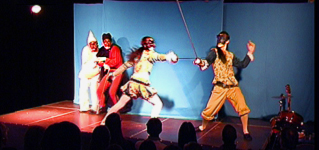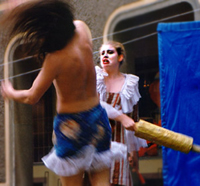This is the struggle between young and old, man and wife, master and servant, between two rivals and so on. The combat is a heritage from the carnival where it was an activity during the festivities, as in the struggle between Lent and the King of Carnival. The important was the combat itself, not who was the winner, even though Lent always won so the Carnival could end.
Same things apply when it comes to adultery and the struggle between man and wife. It’s not important if the adulterous succeed or gets beaten up, if the deceived discovers the adultery or not, if the cheating couple can look forward to more dalliances or not – it is the struggle, the combat itself that is important.
The struggle between man and wife and between the young and the old often mix together. Most of the time it’s about sex; sometimes it is about power; but it always ends with the old – who often are a man – gets defeated.
The combat is one of the things that define all Vulgar Comedy versus the official theatre that almost never actually brings the combat on stage, and never shows it physically, even though it might very well be about a combat, as in Aeschylus or Strindberg.
Back to Performance structure


Pingback: The end of the heydays of Commedia dell’Arte (Part 1) - Commedia dell'Arte & Vulgar ComedyCommedia dell'Arte & Vulgar Comedy
Pingback: The famous Commedia dell’Arte companies and their time. - Commedia dell'Arte & Vulgar ComedyCommedia dell'Arte & Vulgar Comedy
Pingback: What we really know about Commedia dell’Arte (Part 1) |